#beertool
Explore tagged Tumblr posts
Photo

We recently improved the functional design of our MOCA Tool by moving the bottle opener up and adding an ergonomic finger grip. So now it doesn’t matter how many beers you’ve already had, you can always open another one with ease 😅😂 $11.99 on Amazon Prime 4.4/5 ⭐️ Rating w/230 Reviews . . . #MOCAtool #MOCA #keychaintool #bottleopener #pockettool #edc #carry #everydaycarry #keyport #pocketdump #bestEDC #knifecommunity #edctool #amazon #edcgear #handdump #keychain #beer #beertool #beergear (at Coeur d'Alene, Idaho) https://www.instagram.com/p/B247HkSnfdz/?igshid=104sdqawfbd4w
#mocatool#moca#keychaintool#bottleopener#pockettool#edc#carry#everydaycarry#keyport#pocketdump#bestedc#edctool#amazon#edcgear#handdump#keychain#beer#beertool#beergear
1 note
·
View note
Photo

Some bottle openers I did today between heats of a larger project #riddleofsteel #bottleopener #beertools #fireandforge https://www.instagram.com/p/B6EbX-bgqgl/?igshid=1xz881sbffi3u
1 note
·
View note
Photo

Tonight we were popping bottles (of cola) at Prospect Hill Forge! With our hand forged bottle openers, of course! :)
#blacksmith#blacksmithing#metalwork#beertools#handmade#diy#make#maker#badass#teacher#teaching#transgirl teaches blacksmiting#trans#transgender#girls like us#real live trans adult#lgbtq#lgbtqia#lgbt#art#artist#metal art
59 notes
·
View notes
Photo

A new day, a new batch of Ready, Set, Smith students! #blacksmith #blacksmithing #metalwork #teacher #teacherlife #teachersofinstagram #beer #beertools #beerstagram #soda #bottleopener #bottleopeners #badass (at Prospect Hill Forge)
#bottleopener#blacksmithing#teacher#teachersofinstagram#bottleopeners#beerstagram#soda#beertools#metalwork#blacksmith#beer#teacherlife#badass
2 notes
·
View notes
Photo

Tiki Collection O.H.C.B.Y.H / enjoy \ www.onlyhopscanbreakyourheart.com
#cap #snapback #hops #beercap#enjoy #beerhat #onlyhopscanbreakyourheart #ohcbyh #cirobicudo#organikworld #beerart #beertools #beer #beerart #hopshat #ottocap#welovedesign #streetwear #beerwear #craftbeerhatclub #craftbeerhat #tiki#tikicap #hopbohemia #summer #snapback #otto
1 note
·
View note
Text
Beersmith tutorial

BEERSMITH TUTORIAL SOFTWARE
BEERSMITH TUTORIAL TRIAL
BEERSMITH TUTORIAL FREE
Purchasing through our affiliate links helps support our site at no extra cost to you. We ship worldwide and support our products and customers for life. Our new shop with over 150 new products: I've recorded up to 4 dry hop additions with it. Ĭhange the "stage" to primary, secondary, or finishing. I didn't see a way to add dry hop durations in beer tools. Beersmith is mine forever, or at least as long as it works on my os.ĭrinking: Pub Ale, Electric Creamsicle, Mild, Pliny the Younger, Belgian Dark Strong, Weizen, Russian Imperial Stout, Black Butte Porter You never know if they decide to add a pay wall or just shutdown someday and you lose all of your recipes.
BEERSMITH TUTORIAL SOFTWARE
But I like having a licensed downloaded software instead l because having all of my recipes stored on a server of some company has some risk. I wanted to add that I've never used brewers friend either but I did use brewtoad and whatever brewtoad was before it became brewtoad and I liked it. I didn't really use the mobile website for beer tools so can't comment to that. And I like the beersmith app although I'd like to be able to access my inventory from it. Also even if I decided I like beer tools more, it would be difficult to justify paying for another brew software after I've already invested in one that works. If I'm wrong about any of this someone please correct me. But I also like being able to scale recipes to gravity, bitterness and color which I didn't see in beer tools. But ultimately I decided to go back to beersmith because I didn't see a way to add dry hop durations in beer tools which now that I'm writing it out I'm not sure if that should be a deal breaker. It's cleaner, more intuituve and more fun and satisfying to use in my opinion.
BEERSMITH TUTORIAL TRIAL
I've been using beersmith for about a year and I tried a 30 day trial of beer tools recently. So that's where I'm at but am wondering if an investment in something like this will be a step in the right direction as the basement build comes together. I've also liked the portability aspect for being able to bring a recipe to the LHBS and get their two cents on what I wrote. But until this build began I've been hauling everything from the basement to the garage on brew day, so portability was crucial. It's been a couple years since this thread was active so I'm curious what different folks' experience is now? I have been using BeerSmith on my iPad exclusively and certainly like the portability of it. Kal just posted a great opportunity for a discount on BeerTools Pro: Member of the Arizona Society of HomebrewersĪlright, reviving an old thread.
BEERSMITH TUTORIAL FREE
You can get a free 21 day trial at the BeerSmith website.īrad also posts videos weekly on YouTube with various special guests. I love BeerSmith - it's a great program and Brad (owner) is a super nice guy. I've tired Brewer's Friend, and it's very good, but I prefer the interface, inventory and some of the additional depth Beersmith provides. Beersmith also does cloud storage of the recipes, so moving to a different computer is no longer an issue. I was a calibration technician for a dozen years, so I'm uber geeky with the weights and measures. I feel it's a little more in depth, which I freely admit isn't strictly necessary. I also downloaded BeerSmith which seemed good, but i just stuck with Beer Tools Pro. At that point i was still using BrewAlchemy or something like that and Bobby's videos covered solutions to most of my gripes with Beer Tools Pro. I switched over to it a few years ago after watching some of Bobby_M's videos on YouTube where he explains how he uses it. Link changed to support our site at no additional cost to you - we thank you!ĭrinking: Perogi Pale, NEIPA, Nutter's Crossing Nut Brown Ale, Edmund Fitzgerald Porter Clone Location: The Ozark Mountains of Missouriīrewers friend here, no reason not to, it has it all I own Beersmith2 but use Brewers friend as well. Working on: Janet's Brown Ale, Terry's Kolsch, Pilsner It's great to be able to access my recipes from any place, any time.ĭrinking: Steelhead Porter, Alt-Toids, Hefty-Weizen, Terry's Kolsch, African Amber, Pumpkin Ale, Double Dog Ale I own Beersmith and Beer Tooks Pro, but I'm using Brewer's Friend exclusively now. I have beertoolspro but strongly prefer and use brewer's friend (the website). its easy to navigate and customize, thier forums and customer support are quite good, and it will also keep an inventory of what you have on hand. I bought beersmith2 just because it was the first piece of brewing software i found. I am using a MAC, so whats the easiest and best software, BEERTOOLS or BEERSMITH? Your opinions matter, so give me some insight as to which is better and why please. I am new to all this, and our brewery is finished! Cant wait to use it! But we are at the point where we need software.

0 notes
Photo

The other part of our DIY life. DIY beer brewing. #beer #hops #picozymatic #beerbiz #behindthescenes #brewing #demo #beer #beertoys #beertools @bitterandesters (at Bitter & Esters)
0 notes
Text
Formulating Balanced Beer Recipes
I’ve spent a lot of time researching recipes for homebrewing, and everybody claims to have the best recipe that you need to try for yourself. I find this optimism refreshing since online reviews and comments are usually negative, but I also think homebrewers tend to be too optimistic about their creations simply because they made it. He who chops his own firewood gets twice the warmth right? A lot of times I’m looking for how much of a specific ingredient to use and it’s fun to see how different everybody’s threshold is for each ingredient. I know I’ve brewed beers that feature strawberries, rye, chocolate, honey, brown sugar, vanilla, or just an excessive amount of hops, and many times I don’t get enough out of that featured ingredient. On the other hand you have some beers that use too much of an ingredient and overpower your senses (I’m looking your way Christmas ales). Both scenarios can be frustrating, but there is a kind of beer that delivers on its promises without offending. We call those balanced beers.
What Makes a Balanced Beer?
First off, I don’t want you to think a balanced beer has to be void of all flavors to appease the masses. It can still have distinct flavors suitable to its style, but none of those flavors should be overpowering. For instance, you may still have some coffee notes in a balanced stout. Yet it doesn’t taste like a cold cup of Joe. A balanced IPA may still have an underlying bitterness. Yet it’s not like you’re biting a bar of soap. Both of these attributes are expected in their style and there’s nothing wrong with those flavors showing through in an appropriate amount.
If you compare most beer recipes, you’ll realize that they follow the same general formula for malts. To start out you use about 70-100% of a light base malt like 2 row, pale, or pilsner. Then you add in 0-30% of specialty malts like caramel, chocolate, or wheat to alter the color and flavor. This is a tried and true foundation for making a well-balanced beer. For example, there is no need to use pounds of chocolate malt in a stout to get the rich flavor or color you’re looking for. This can be backed up by several commercial breweries who have released homebrew sized recipes of their popular beers. Brooklyn Brewery shared the recipe for their popular Brooklyn Lager on their website’s blog. It calls for 9.6lbs of 2 row, 14oz of Munich, and 12oz of 60L caramel. Therefore, 86% of that beer is base malt, and 14% is specialty malts. Another 200+ commercial recipes can be seen in BrewDog’s DIY Dog. It’s a free document released by BrewDog that shows how to homebrew every beer they’ve created in the last decade. Looking at their flagship Punk IPA, it calls for 9.6lbs of extra pale malt and 0.55lbs of Caramalt. That makes their IPA 95% base malts and 5% specialty malts. MadTree also offers recipes for their beers on their website. Thundersnow, their popular Scottish ale, uses 10.25lbs of 2 row, 0.98lbs of caramel 90L, 0.73lbs of extra special, 0.73lbs of Victory, 0.34lbs of Melanoidin, 0.27lbs of chocolate rye, and 0.24lbs of dark chocolate. Despite making the most complicated grain bill known to man, they still ended up with 76% base malt and 24% specialty malts. Feel free to experiment with different amounts of malts, but don’t reinvent the wheel. The world’s most experienced brewers have already figured this out for us.
Using Hops to Create a Balanced Beer
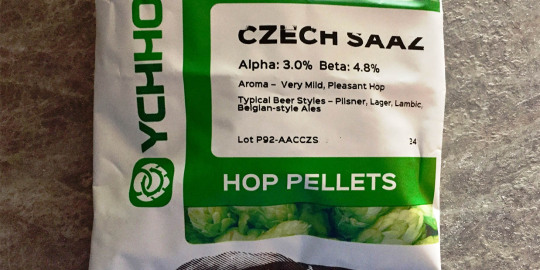
Hops can be more difficult to play with for several reasons. For starters every variety contains a unique blend of oils, flavors, and aromas. Then to further complicate things, annual crops can alter the levels of those oils making year to year batches inconsistent. If you do get a grasp on the potency of your hops, then you must figure out your utilization rate (how much of the oil you can get out of your hops) which depends on the gravity of your wort, how vigorous your boil is, how big your batch is, and many other variables. Furthermore, adding hops to your beer at different stages in the brewing process can yield more or less bitterness, flavor, and aroma. Understanding how each variable impacts your beer can be tedious, but luckily there are a few guidelines to help you achieve a balanced beer.
A basic schedule for hop additions would be as follows for a typical 60 minute boil. First, add bittering hops near the beginning of the boil (60 minutes). Even if you don’t like bitter beers, this is necessary to balance the sweetness from the malts in your finished beer. Since these hops will boil for a long time, you’ll end up destroying the more delicate compounds in the hops, and only be left with their bitterness. Next, add flavoring hops near the middle of the boil (30 minutes). Since these hops aren’t boiled as long, some of the delicate hop compounds remain in your finished beer and can add some depth and flavor. They also don’t contribute as much bitterness due to a shorter boil time. Finally, add your aroma hops near the end of the boil (5 minutes). Since these aren’t boiled for long, a lot of the delicate hop compounds remain in your finished beer to improve the hop aroma. The short boil time also means they add very little bitterness to your beer. You don’t need to follow this schedule strictly though and I recommend you experiment to learn more about timing’s impact. However, timing is the easy part. The more difficult part is figuring out how many hops to add at each stage.
As I mentioned before, every type of hop has a unique blend of oils in it. So certain hops can be better suited for bittering, while others may be better for adding flavor or aroma. This is based on the ratio of several different oils in each variety and means it’s not always easy to swap one type for another and achieve the same effect. Most hop websites like Yakima Valley, YCH, or 47 Hops have a chart or description for each hop to help guide you when creating a recipe. The most dominant oil in a hop is called its alpha acid. Packages usually display the alpha acid content to help you understand that hop’s bittering potential. A higher percentage means that hop is able to add more bitterness to your beer. In general, higher alpha acid hops (>10%) are better for bittering while lower alpha acid hops (<10%) are more mild and used for flavor and aroma. Another important factor for how much bitterness a hop will add to your beer is utilization. Utilization is how effective you are at boiling the oils out of your hops. The lower your boiling gravity is or the longer you boil your hops, the more oil you will be able to extract from them. The last piece of the puzzle is the final volume of your batch. Using all of these factors and a few simple equations, we can estimate the bitterness of a beer (expressed as International Bittering Units or IBU’s).
Let’s say we’re brewing a 5 gallon batch of amber ale and only adding 2oz of Fuggle hops for bittering. Our Fuggle hops contain 5% alpha acid. First we need to figure out how much bittering oil our hops will be adding to our wort. We can do this by calculating the AAU’s (alpha acid units) of our hop addition. This takes into account quality (alpha acid %) vs quantity (ounces of hops).
AAU = (ounces of hops) x (alpha acid %)
AAU = 2 x 5
AAU = 10
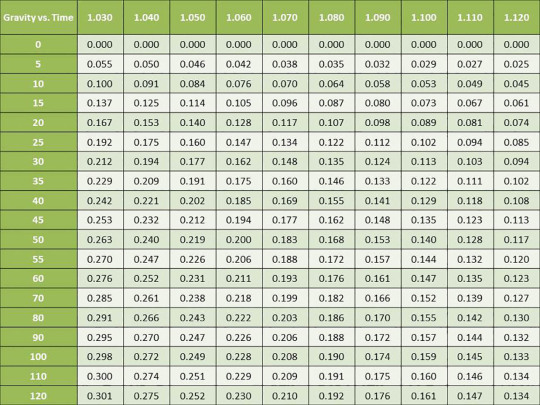
Next we need to figure out our utilization rate using the chart from John Palmer’s book “How To Brew”. Since we’re using these hops for bittering, we’ll boil them for 60 minutes. Let’s say we used 6lbs of amber DME to make our wort and are boiling 3 gallons in a small pot.
Boil Gravity = 1 + (pounds of DME x 0.04 gravity points per pound / gallons boiled)
Boil Gravity = 1 + (6 x 0.04 / 3)
Boil Gravity = 1 + (0.080)
Boil Gravity = 1.080
Now we can look at the table to see that a 60 minute boil for a 1.080 gravity wort gives us a utilization of 0.176. With that we have all the pieces we need to calculate IBU’s. So there’s no confusion, the “75” in the following equation is a conversion factor to allow us to use ounces and gallons in the equation. You didn’t overlook something in our earlier calculations.
IBU = AAU x Utilization x 75 / Finished Batch Volume
IBU = 10 x 0.176 x 75 / 5
IBU = 26.4
In this example our batch of amber ale would have about 26 IBU’s. If we wanted to do more hop additions for this recipe, then we’d need to do these calculations again for each addition, and add those IBU’s to the 26 IBU’s we already have. I use BeerTools Pro for creating my recipes, and the IBU calculator in that software is always very close to these calculations.
In my experience it’s more likely to not use enough hops and make a beer that’s too sweet. This has happened to me on styles that aren’t meant to be hoppy (so I intentionally go light on the hops) and high alcohol beers (which have poor hop utilization and more residual sugars from the large amount of malts) which both lead to a sweeter beer. The final beer ends up not having quite enough bitterness to counter balance the sweetness of the malt. It doesn’t necessarily make an awful beer, but it can leave the beer with a lot of room for improvement. I think it’s misunderstood by a lot of homebrewers on how many hops are appropriate for styles other than IPA’s. Where some people will simply say more is better.
Your Beer’s Water Profile Also Plays a Role
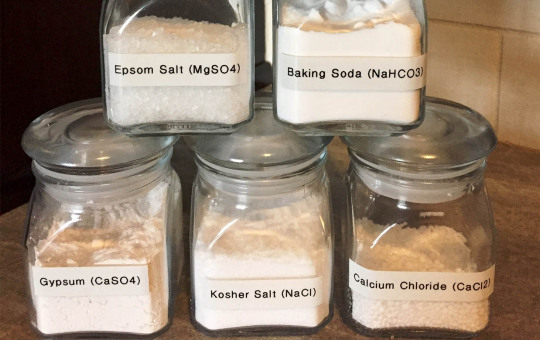
It’s undeniable that water plays a large role in brewing, yet the ingredient that makes up the majority of beer is often overlooked. Brewing water can be a very complicated topic when you dive into the details, but there are a few simple things you can do to improve your brews without majoring in chemistry. My first bit of advice is if your tap water tastes or smells odd don’t use it for brewing. I know tap water is cheap and easy to use, but starting with a bad ingredient will do you no favors in the end. It’s like making a cake with dirt instead of flour, and hoping that baking it and covering it with frosting will magically make it taste normal when it’s done. If you do insist on using tap water, it always helps to run it through a charcoal water filter first. That will help reduce contaminants and chlorine (if present) which is not beneficial in any amount. Even with that though, your tap water may still contain low or high levels of various minerals which can make it well-suited for some types of beer, but less so for others. It’ll vary depending on your local water supplier so there’s no single piece of advice that can cover all the different types of water in the world. I really don’t like guess work, so I prefer to buy distilled water from my local grocery store (~$0.90/gal) and “build up” my mineral profile. Distilled water has no minerals in it so you know you’re starting with a clean slate every time. From there I use the EZWaterCalculator (http://www.ezwatercalculator.com/) to figure out which minerals I need to add to my distilled water, to “build up” certain minerals. During the process, the calculator also helps you find a proper pH for your mash which is useful. To me this feels like a more precise method, and it’s a small amount of work and money to improve your beer.
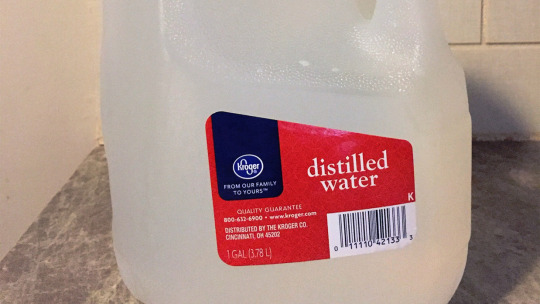
Part of the fun for homebrewers is making whatever kind of beer you want. You can make it as alcoholic as you want, use whatever ingredients you want, and ultimately you decide what the beer tastes like. Some brewers are more daring when it comes to trying new ingredients, but no matter what you add, everybody’s goal is to make their beer taste good. Unfortunately, this is often easier said than done. The first homebrew that comes to my mind for being unbalanced is a grapefruit double IPA that I made a few years ago. I was trying to imitate the Grapefruit Sculpin brewed by Ballast Point. When I first tried the Ballast Point beer I was extremely impressed. It had a strong, clean taste of grapefruit and the backbone of a solid IPA. However, my version ended up less impressive. After some research I had chosen to add grapefruit peels to my secondary to get that signature flavor. So I peeled 6 giant grapefruits and threw the peels into my secondary for 10 days. At that point I didn’t realize how far 6 peels would take me for a 5 gallon batch. After kegging the beer and pulling my first pint, I left these exact notes in my binder for future Mike. “Sample is overwhelmingly grapefruity. Tastes and smells like the strong bitter oils from the peel. Good, but hoping that it mellows/blends in better. Too strong right now. Borderline taste of citrus hand sanitizer.” Unfortunately it didn’t get better. My hand sanitizer beer soon developed a soapy taste which left me pouring the batch down the drain. Ironically, this is where all Dawn eventually ends up anyways. I would like to note though, that I had pulled an 8oz sample when racking to secondary, and added a small piece of grapefruit peel to the plastic bottle to imitate my final beer. After I force carbonated the sample, a buddy and I drank it 8 hours later. At that time we were both very impressed with the beer. It had an authentic grapefruit flavor and an amazingly fresh aroma. I was on the right path but over did it. If I were to brew this beer again, I would try 1 grapefruit peel for the last 1 day in secondary. Maybe then I could recreate that delicious sample.
If you think of balance as a teeter totter, you can’t have one side that’s completely empty. The sweetness from the malts needs to be balanced by the bitterness from the hops. Water shouldn’t have absolutely no minerals or an extremely high amount of 1 mineral. Adding 1 grapefruit peel might not be enough, but 6 peels is definitely too many. In the end each brewer’s preference decides where to put the fulcrum to balance the teeter totter. Everybody still has the same goal though, which is to not leave one end sitting on the ground.

by Mike Camera Mike is a Cleveland, OH native that has been homebrewing for about 5 years. He mainly focuses on making good beer, but has also made some bad ciders in the past. His other deep passion is for cars, which led him to get a degree in Mechanical Engineering at the University of Toledo. He now lives in Columbus, OH with his beautiful wife and 2 dachshunds. He works full time at Honda’s R&D facility, where he’s an on-site engineer for a supplier called L&L Products. In a sense he likes drinking and driving, but of course not in that order. Fast beers and great cars are good for the soul. Yes you read that correctly.
Learn more about balanced grain bills »
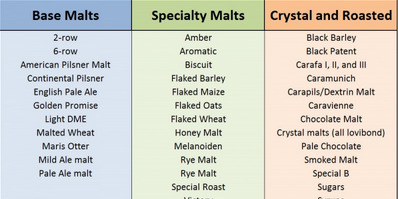
After most of us have a few brew days behind us, and possibly a few beers in our belly, we get the bright idea that we can make a stellar recipe…on our first try. As I like to say, “Even a blind squirrel finds a nut once in awhile.” However, chances are that squirrel is not you! I remember my first recipe – a southern English brown ale. I looked at the BJCP guidelines for 11B and saw there was a large emphasis on the “sweetness” in this style. I proceed to throw over 2-lbs of crystal 60L malt in that five gallon recipe and used very little hops which contributed to a low bitterness…
Formulating Balanced Beer Recipes was originally published on HomeBrewTalk.com
0 notes
Photo

melody got me a souvenir from south korea! thank youuuu!! ❤️🍺#beerwrench #beertool #bottleopener #budnamubrewery @budnamu_brewery (at 버드나무 브루어리 Budnamu Brewery)
0 notes
Photo

While we’re talking about the RuSH Tool, let’s pop open a cold one and celebrate #NationalBeerDay #Cheers #Salud #Ganbei #Vo #Proost #Sante #NaZdravi #Kanpai #Skal 🍻 . . . #edc #rushtool #bottleopener #beer #beertool #travel #organized #edc #style #everydaycarry #keyport #pockettool #multitool #edcgear #mykeyport #gear #beprepared #mensessentials #essentials #traveledc #traveltool (at Las Vegas, Nevada) https://www.instagram.com/p/Bv-MdvPgzV-/?utm_source=ig_tumblr_share&igshid=j8nk47ut30bo
#nationalbeerday#cheers#salud#ganbei#vo#proost#sante#nazdravi#kanpai#skal#edc#rushtool#bottleopener#beer#beertool#travel#organized#style#everydaycarry#keyport#pockettool#multitool#edcgear#mykeyport#gear#beprepared#mensessentials#essentials#traveledc#traveltool
0 notes
Photo

I had such a perfect birthday! There was #rainbow cake, and lovely friends, and my wife is the cutest! (She baked the rainbow cake wif unicorns and anvils on top and the unicorn was so pink and preeeeeetty!) AND I capped it all off with an excellent class at The Steel Yard! @thesteelyard #blacksmith #blacksmithbirthday #teacher #teacherlife#teachersofinstagram #ilovemyjob #badass #beer #beertools#beerstagram #bottleopener #bottleopeners
#blacksmith#blacksmithing#metalwork#teacher#craft#crafts#handmade#i love my job#badass#beer#beer tools#bottle opener#beer opener#my birthday was hella gay#gay#unicorn cake#lgbt#lgbtq#trans#transgirl teaches blacksmithing#transgender#real live trans adult#art#artist
40 notes
·
View notes
Photo

A new day, a new batch of Ready, Set, Smith students!
#blacksmith#blacksmithing #metalwork #teacher #teacherlife #teachersofinstagram#beer #beertools #beerstagram #soda #bottleopener #bottleopeners#badass
#blacksmith#blacksmithing#metalwork#ironwork#handmade#hand forged#bottle opener#beer#beer tools#soda#badass#transgirl teaches blacksmithing#real live trans adult#transgender#trans#lgbtq#lgbtqia#art#artist#functional art#maker#make
29 notes
·
View notes
Photo

Students really got a grip (geddit?) on making tongs during Tuesday’s Ready, Set, Smith! at Prospect Hill Forge in Waltham, MA! :)
#blacksmith#blacksmithing#metalwork#beertools#handmade#diy#make#maker#badass#teacher#teaching#transgirl teaches blacksmiting#trans#transgender#girls like us#real live trans adult#lgbtq#lgbtqia#lgbt#art#artist#metal art
#blacksmith puns#blacksmith#blacksmithing#metalwork#metalworker#dit#make#maker#badass#teach#teacher#teaching#transgirl teaches blacksmithing#real live trans adult#art#tools#tools to make tools#lgbtq+#lgbtqia#artist
48 notes
·
View notes
Photo

Tonight we were popping bottles (of cola) at Prospect Hill Forge! With our hand forged bottle openers, of course! :) #blacksmith #blacksmithing #metalwork #teacher #teachersofinstagram #maker #make #handmade #bottleopener #beertools #brew #beerstagram #badass (at Prospect Hill Forge)
#beerstagram#brew#maker#make#blacksmith#badass#teacher#bottleopener#metalwork#handmade#teachersofinstagram#blacksmithing#beertools
0 notes
Photo

Tiki Collection O.H.C.B.Y.H / enjoy \ #cap #snapback #hops #beercap#enjoy #beerhat #onlyhopscanbreakyourheart #ohcbyh #cirobicudo#organikworld #beerart #beertools #beer #beerart #hopshat #ottocap#welovedesign #streetwear #beerwear #craftbeerhatclub #craftbeerhat #tiki#tikicap #hopbohemia #summer #snapback #otto
www.onlyhopscanbreakyourheart.com
0 notes
Photo

Tiki Collection O.H.C.B.Y.H / enjoy \ #cap #snapback #hops #beercap#enjoy #beerhat #onlyhopscanbreakyourheart #ohcbyh #cirobicudo#organikworld #beerart #beertools #beer #beerart #hopshat #ottocap#welovedesign #streetwear #beerwear #craftbeerhatclub #craftbeerhat #tiki#tikicap #hopbohemia #summer #snapback #otto
www.onlyhopscanbreakyourheart.com
0 notes